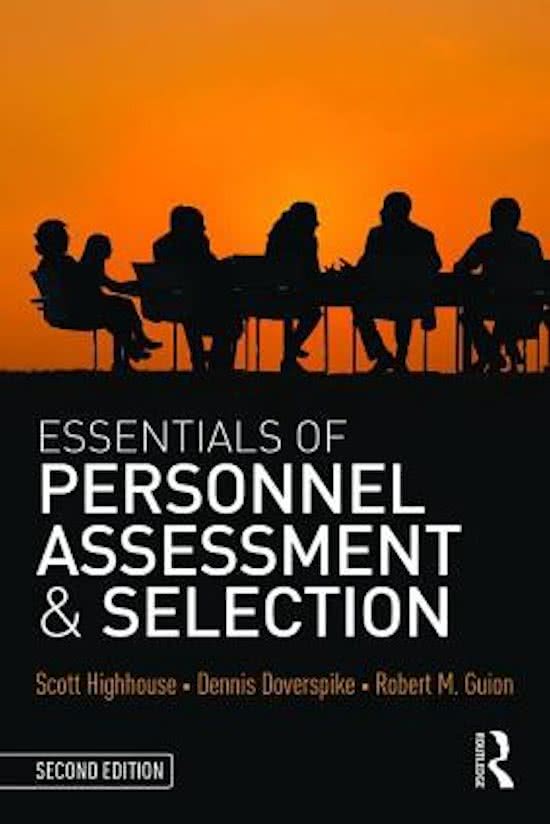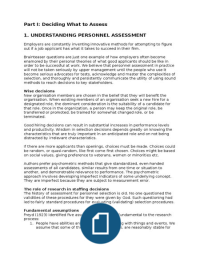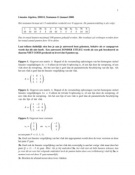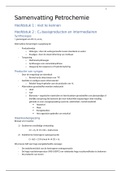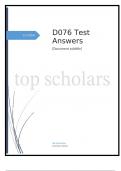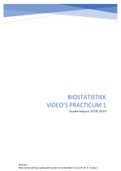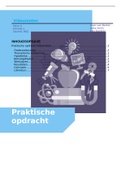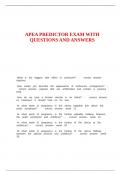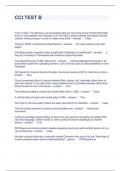Part I: Deciding What to Assess
1. UNDERSTANDING PERSONNEL ASSESSMENT
Employers are constantly inventing innovative methods for attempting to figure
out if a job applicant has what it takes to succeed in their firm.
Brainteaser questions are just one example of how employers often become
enamored by their personal theories of what good applicants should be like in
order to be successful at work. We believe that personnel assessment in practice
will not be taken seriously by upper management until the people who use it
become serious advocates for tests, acknowledge and master the complexities of
selection, and thoroughly and persistently communicate the utility of using sound
methods to reach decisions to key stakeholders.
Wise decisions
New organisation members are chosen in the belief that they will benefit the
organisation. When existing members of an organisation seek a new hire for a
designated role, the dominant consideration is the suitability of a candidate for
that role. Once in the organization, a person may keep the original role, be
transferred or promoted, be trained for somewhat changed role, or be
terminated.
Good hiring decisions can result in substantial increases in performance levels
and productivity. Wisdom in selection decisions depends greatly on knowing the
characteristics that are truly important in an anticipated role and on not being
distracted by irrelevant characteristics.
If there are more applicants than openings, choices must be made. Choices could
be random, or quasi-random, like first come first chosen. Choices might be based
on social values, giving preference to veterans, women or minorities etc.
Authors prefer psychometric methods that give standardized, even-handed
assessments of all candidates, similar results from one time or situation to
another, and demonstrable relevance to performance. The psychometric
approach involves developing imperfect indicators of some underlying concept.
They are imperfect because they are subject to measurement error.
The role of research in staffing decisions
The history of assessment for personnel selection is old. No one questioned the
validities of these procedures for they were given by God. Such questioning had
led to fairly standard procedures for evaluating (validating) selection procedures.
Fundamental assumptions
Freyd (1923) identified five assumptions that were fundamental to the research
process:
1. People have abilities and other traits of dealing with things and events. We
assume that some of them, especially abilities, are reasonably stable for
, most adults, stable enough that the level of ability observed in a candidate
will stay pretty much the same for some time
2. People differ in any given trait. Individual differences exist on traits and
characteristics.
3. Relative differences in ability remain pretty much the same even after
training or experience.
4. Different jobs require different traits
5. Required abilities can be measured. Not only can traits or abilities be
measured, but the resulting score or numbers have some real
mathematical meaning.
Steps in traditional validation
Personnel research has traditionally focused on jobs that employ large numbers
of people. For such jobs, traditional employment test validation follows steps like
these:
- Analyse jobs and organizational needs
= both inform judgments of whether the need is for improved selection or
some other sort of organizational intervention, such as redesigning the job
or training current employees.
Job analysis asks what a worker does, how it is done and the resources
(personal and organizational) used in doing it.
- Choose a criterion
= the criterion in personnel research is that which is to be predicted: a
measure of performance, of a limited aspect of performance, or of some
valued behaviour associated with the assigned job role.
The predictor is what we use to assess the job candidates (future)
suitability for the job. The criterion is the thing we use to assess the
employees (current) performance on the job. Validation is the process of
estimating the relationship between the predictor and the criterion.
- Form predictive hypotheses
= more than one kind of ability or trait likely must be measured if the
criterion is to be predicted in all of its complexity. Each predictor-criterion
pair is a hypothesis open to research.
- Select methods of measurement
= we tend to have more research on test and questionnaires than in other
methods for good reason.
Test use is not free from problems. One serious problem is the tendency to
assess candidates only on traits for which tests are available, rather than
to assess characteristics not easily assessed by available testing
procedures.
- Design the research
1. UNDERSTANDING PERSONNEL ASSESSMENT
Employers are constantly inventing innovative methods for attempting to figure
out if a job applicant has what it takes to succeed in their firm.
Brainteaser questions are just one example of how employers often become
enamored by their personal theories of what good applicants should be like in
order to be successful at work. We believe that personnel assessment in practice
will not be taken seriously by upper management until the people who use it
become serious advocates for tests, acknowledge and master the complexities of
selection, and thoroughly and persistently communicate the utility of using sound
methods to reach decisions to key stakeholders.
Wise decisions
New organisation members are chosen in the belief that they will benefit the
organisation. When existing members of an organisation seek a new hire for a
designated role, the dominant consideration is the suitability of a candidate for
that role. Once in the organization, a person may keep the original role, be
transferred or promoted, be trained for somewhat changed role, or be
terminated.
Good hiring decisions can result in substantial increases in performance levels
and productivity. Wisdom in selection decisions depends greatly on knowing the
characteristics that are truly important in an anticipated role and on not being
distracted by irrelevant characteristics.
If there are more applicants than openings, choices must be made. Choices could
be random, or quasi-random, like first come first chosen. Choices might be based
on social values, giving preference to veterans, women or minorities etc.
Authors prefer psychometric methods that give standardized, even-handed
assessments of all candidates, similar results from one time or situation to
another, and demonstrable relevance to performance. The psychometric
approach involves developing imperfect indicators of some underlying concept.
They are imperfect because they are subject to measurement error.
The role of research in staffing decisions
The history of assessment for personnel selection is old. No one questioned the
validities of these procedures for they were given by God. Such questioning had
led to fairly standard procedures for evaluating (validating) selection procedures.
Fundamental assumptions
Freyd (1923) identified five assumptions that were fundamental to the research
process:
1. People have abilities and other traits of dealing with things and events. We
assume that some of them, especially abilities, are reasonably stable for
, most adults, stable enough that the level of ability observed in a candidate
will stay pretty much the same for some time
2. People differ in any given trait. Individual differences exist on traits and
characteristics.
3. Relative differences in ability remain pretty much the same even after
training or experience.
4. Different jobs require different traits
5. Required abilities can be measured. Not only can traits or abilities be
measured, but the resulting score or numbers have some real
mathematical meaning.
Steps in traditional validation
Personnel research has traditionally focused on jobs that employ large numbers
of people. For such jobs, traditional employment test validation follows steps like
these:
- Analyse jobs and organizational needs
= both inform judgments of whether the need is for improved selection or
some other sort of organizational intervention, such as redesigning the job
or training current employees.
Job analysis asks what a worker does, how it is done and the resources
(personal and organizational) used in doing it.
- Choose a criterion
= the criterion in personnel research is that which is to be predicted: a
measure of performance, of a limited aspect of performance, or of some
valued behaviour associated with the assigned job role.
The predictor is what we use to assess the job candidates (future)
suitability for the job. The criterion is the thing we use to assess the
employees (current) performance on the job. Validation is the process of
estimating the relationship between the predictor and the criterion.
- Form predictive hypotheses
= more than one kind of ability or trait likely must be measured if the
criterion is to be predicted in all of its complexity. Each predictor-criterion
pair is a hypothesis open to research.
- Select methods of measurement
= we tend to have more research on test and questionnaires than in other
methods for good reason.
Test use is not free from problems. One serious problem is the tendency to
assess candidates only on traits for which tests are available, rather than
to assess characteristics not easily assessed by available testing
procedures.
- Design the research


